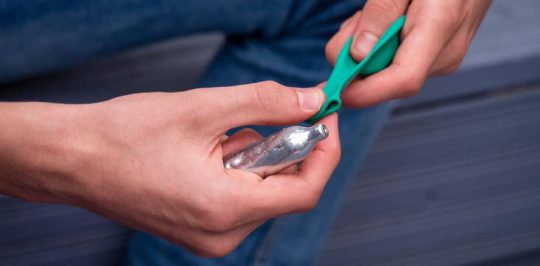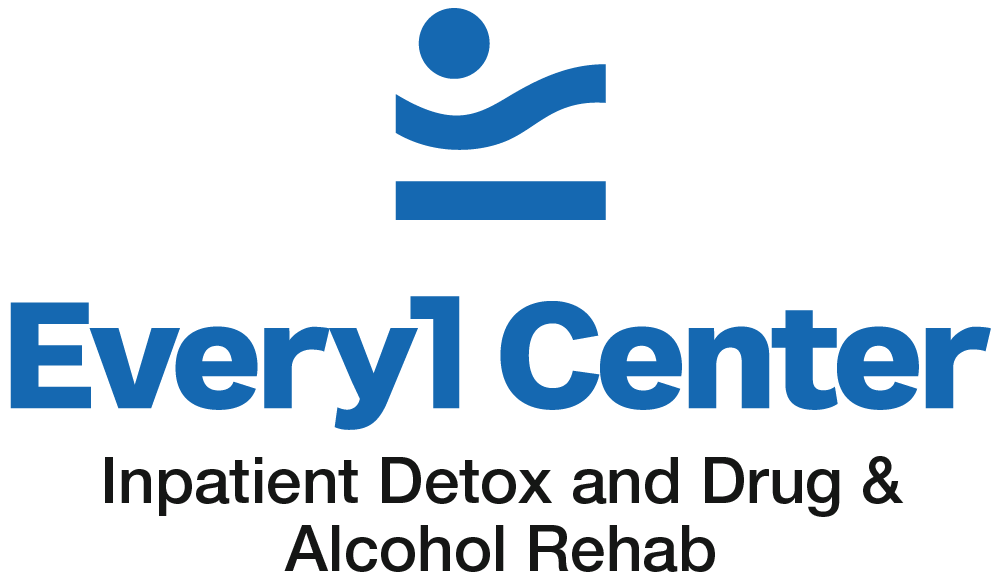Nitrous Oxide Whippits Addiction Treatment | Every1 Center | Troy, NY
Whippit Addiction And Abuse
A Brief History of Nitrous Oxide, or Whippits
Nitrous oxide was first developed in 1772 by an English chemist named Joseph Priestley. His work was followed by Humphry Davy, a chemist who experimented with nitrous oxide and found more evidence for its anesthetic properties. By 1844, a doctor by the name of Horace Wells used nitrous oxide during dental procedures. This success was greeted with enthusiasm in the medical field, and the Colton Dental Association fully accepted its use in 1863.

How are Whippits Abused?
Medical professionals have used nitrous oxide safely and effectively in the clinical setting for many years. The pain-relieving properties of nitrous oxide also mean that it can be abused recreationally. It became popularized by teenagers because of its availability, low cost, and legal status.
Anyone can obtain these nitrous oxide cartridges over the counter; they are sold as chargers for whipped cream dispensers. The street term for this container is the whippit or whip-its, which may also be called laughing gas. An older term used was hippy crack.
Who Is At Risk For Whippit Abuse?
Teenagers are at the highest risk of abusing nitrous oxide or whippits. They often assume that because these containers are legally sold within the United States, they are also safe. The canisters are sold in many local grocery stores, for example.
Young people often have more difficulty obtaining other forms of mind-altering substances, so this might become an easy way to experience the sensation of being high. Nitrous oxide is also known to reduce the sensation of anxiety, and this can be a source of comfort for a teenager with emotional problems.
However, there are serious risks involved with the recreational use of whippits, and addiction increases these risks, and teens are the least likely to take this threat seriously. Teenagers are most likely to use whippits to experience the euphoria produced when the brain is deprived of oxygen for short periods; however, this is dangerous.
Nitrous oxide is an odorless gas popular for its euphoric qualities like reducing anxiety and its ability to produce a brief high. It can be highly addictive when used for these purposes.
Are Whippits Dangerous?
As a recreational substance, repetitive use can easily lead to addiction. The dangers of addiction to whippits are related to the need to increase the consumption of the gas in order to get the same experience. Over time, this can reduce the oxygen to the brain to a dangerous degree.
Several methods can be used to get the nitrous oxygen out of the canister. The user may inhale the gas from the canister; the person might also use a technique that involves putting a bag over the head or using a balloon. The dangers of using nitrous oxide in this manner increase with other drugs and alcohol consumption.
Dangers of Whippit Abuse
The American Association for Clinical Chemistry demonstrated that nitrous oxide inhalation could affect vital organs like the liver, kidneys, heart, lung, and brain. Even small amounts of this substance might provoke severe reactions like seizures, arrhythmia, and sudden loss of function of vital organs.
It becomes potentially lethal when mixed with alcohol and other substances. The internal organs may be damaged, and death is not uncommon. Exposure to the gas through direct inhalation from the container increases the risk of damaging the nose, mouth, and throat area; in some cases, frostbite can occur due to this exposure.
Even a short interruption in the oxygen to the brain can be severe. Damage to the brain may occur even when nitrous oxide use is relatively mild. If the person has pre-existing conditions, the risks are even higher. The dangers of using whippits increases every time the person engages in this activity. The use of whippits in small spaces with little air circulation also increases the risks of fatality.
Symptoms and Side Effects
Whippits can become a habit, which increases the dangers associated with extensive exposure to nitrous oxide. This gas has no odor, and this makes it difficult to detect. The small canisters are easy to conceal, and the feeling of being high only lasts for a short period of time. This can make it hard to know if your family member or friend is addicted.
Understanding the symptoms and side effects is helpful when trying to determine if your loved one is addicted to abusing whippits. The most important sign is the appearance of the damaged small containers or whipped cream cans. Cracking the can enables the person to gain access to nitrous oxide. If you see these canisters and small balloons that have an odor or strange smell, this is a sign that the person is abusing whippits.
Observe the behavior of the person that you suspect might be addicted to nitrous oxide:
1. Some of the most common short-term side effects include problems with balance, trouble with memory, muscle weakness, tingling, numbness, paranoia, and mood swings.
2. Some of the most common long-term effects might include damage to the liver, kidneys, heart, lungs and brain. The blood pressure might become abnormal low, and heart issues often increase.
3. Some people will also experience severe memory loss, numbness, fainting, and a weak immune system. Muscle spasms and damage to the brain cells might be accompanied by paranoia and wild changes in emotions. Vitamin B12 deficiency also accompanies long-term use of whippits.
Withdrawal Signs of Whippit Abuse
People who abuse substances will often experience withdrawals when they discontinue use suddenly. Unlike the withdrawal symptoms that often accompany a sudden halt in the use of drugs or alcohol, these users generally don’t experience symptoms once they stop inhaling this gas.
However, it’s not unusual for the person using this substance to have a craving to continue using. This is especially dangerous because the user will generally require larger doses of nitrous oxide to feel the same euphoria. Another common symptom is the deficiency of Vitamin B12.
The nitrous oxide gas will interfere with the normal production of B12, leading to various health problems associated with a deficiency in this vitamin. Rehabilitation facilities can help to restore the body’s normal levels of B12 in a safe environment that promotes detoxification, patient education, and counseling services.
Medical Nitrous Oxide
Nitrous oxide is still used in medical settings to this day. However, when used for medical situations, the patient will receive nitrous oxide combined with up to 70 percent oxygen. This dilutes the effect of nitrous oxide to make it less harmful and reduce the risk of asphyxiation, organ damage, or death.
It is still used in dental procedures, and it may also be used to relieve labor pains during a medically supervised birth. Medical nitrous oxide is also used in specific emergencies involving trauma and injury. The importance of proper medical supervision cannot be overstated.
Treatment Options
Various treatment options are available to patients seeking help from addiction to nitrous oxide through the chronic use of whippits. Medical supervision in a secure facility offers a reliable intervention that can help the person to start on the road to overcoming the addiction.
Here is an overview of the various options for treating addiction from whippits at Every1 Center:
Detoxification: The process called detoxification involves cleansing the body’s system of the substance that is being abused. If there are cravings or withdrawal symptoms during this period, medical professionals can mitigate these effects using the industry’s standards for care.
Behavior therapy: Abuse of inhalants like whippits can be treated with behavioral therapies. This is offered at institutional rehabilitation centers like Every1 Center. It can be combined with cognitive-behavioral therapy, group therapy, individual counseling, psychiatric services, medication, and patient education.
Inpatient services: The inpatient option enables whippit addicts to access care around the clock. Medical professionals are available to treat the patient, ensure a safe environment and prevent any chances of relapsing. Additional services are offered under doctor supervision to create a plan for the rehabilitation of the individual so that the person can return to the community.
Outpatient services: These services are almost identical to the ones offered at the inpatient facility; however, they are given in a setting other than the clinic. This may include the person’s home, for example. Outpatient care is also administered to addicts living in group homes or other living arrangements. This enables the person to receive services without interrupting their work or schooling.
Every1 Center
Addiction can be a difficult thing to overcome. It takes over your life, dictating your every thought and action. You become consumed by your need for the substance, and anything else in life falls by the wayside. If you or someone you know is struggling with addiction, we want you to know that you are not alone. We are here to help you through this difficult time. We will provide you with the resources and support you need to overcome your addiction and get your life back on track. Contact us today to learn more about our services and how we can help you or someone you care about achieve recovery.
